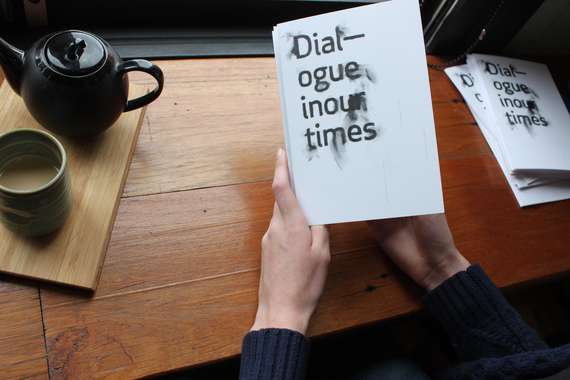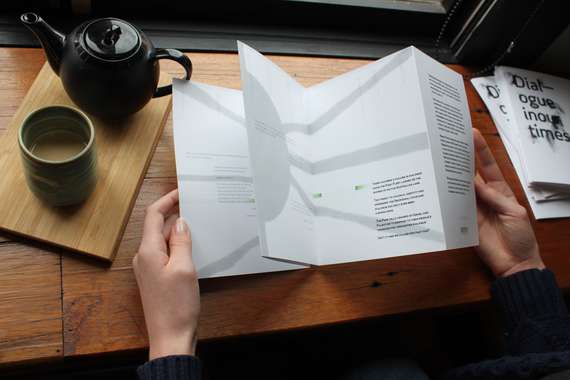Dialogue In Our Times
This work has not been commented by curators.
Title
Dialogue In Our Times
Headline
Remember Our First Nation People
Concept author(s)
Jessica Watson
Concept author year(s) of birth
1990
Concept author(s) contribution
I was the sole researcher, designer and producer.
Concept author(s) Country
Australia
Friendly Competition
Radical intimacies: dialogue in our times (2014)
Competition category
Visual communication practice
Competition subcategory
static
Competition field
academic
Competition subfield
student
Subfield description
Swinburne University of Technology
Check out the Radical intimacies: dialogue in our times 2014 outlines of Memefest Friendly competition.
Description of idea
Describe your idea and concept of your work in relation to the festival outlines:
'Remember Our First Nation People' speaks to all non-Indigenous Australians to raise awareness about the G20 Summit being held in Brisbane on Jaggera land in November this year. It illustrates a press release from the Brisbane Aboriginal-Sovereign Embassy through lyrical typography with a timeline of key failures in dialogue between Australian policy makers from the time of invasion up until today. It is this failure in dialogue that keeps Indigenous Australians oppressed and living in third country conditions. And the media propaganda that keeps them there, out of sight and mind from the general public. The timeline takes readers up to the times of today and poses the question, "How can we design dialogue that will work?" with hope that the protests at the G20 Summit will keep the plight of Indigenous people around the world in the forefront of the minds of the world's leaders. The reverse side of the design illustrates a news article promoting a 'deaths in custody protest at G20' and features several names of Indigenous people who have died in police custody recently that have caused outcry due to their inhumane circumstances and lack of police prosecution. This text is accompanied by graphs showing statics over more than 10 years of rates of Indigenous in jail and rates of Indigenous deaths in custody. Both with staggering figures. Overall, it is the non-existence of dialogue that keeps the conversation a monologue. The Pope has called to the leaders of Palestine and Israel to have 'undaunted dialogue' and I think it's about time we had that too.
What kind of communication approach do you use?
An A5 concertina fold brochure that looks more artistic than activist to attract a variety of non-Indigenous readers. A solid piece of design that feels special and worthwhile keeping, in the hope that readers take the piece home, consider attending the protests or showing support in anyway they can.
What are in your opinion concrete benefits to the society because of your communication?
1. Awareness of G20 Summit in Brisbane in November; 2. Education about poor standards of living still facing the Indigenous; 3. Education about extremely high Indigenous deaths in custody; 4. Communicate wishes of Indigenous people in relation to G20 outcomes; and 5. Call to action to attend protests in solidarity with First Nation people.
What did you personally learn from creating your submitted work?
Until deep investigation through extensive research, including the watching of Utopia by John Pilger and discovering many activist groups like Concerned Australians, I was not aware of the large numbers of Indigenous deaths in custody or the government deceit to refuse housing, water and electricity unless 99 year leases are signed. I learnt about the refusal to acknowledge the Indigenous who lost their lives defending their land against invasion in the Australian War Memorial and that Australia is the only country to not eradicate third world country diseases such as Trachoma and Obtitus Media. I agree with Pilger’s conclusion that “we need overseas aid for our Aborigines”. Probably the most disgusting thing I learnt was that the picturesque tourist attraction Rottnest Island was once an Indigenous concentration camp where hangings and executions took place. The gallows are now a spa and accommodation facility called ‘Karma Spa’. Amongst many things more, I also learnt that although Aboriginals account for only 3% of Australia’s population, they are the most imprisoned persons on earth - that’s six times more than apartheid South Africa and eight time more than the US.
Why is your work, GOOD communication WORK?
This is good communication work because, without appearing overly Aboriginal, I am targeting non-Indigenous people to raise awareness about a poorly reported issue. This piece not only outlines some major problems that many non-Indigenous are not fully aware of, but also has a call to action to stand united in solidarity with Indigenous and non-Indigenous Australians at the G20 Summit and beyond.
Where and how do you intent do implement your work?
I intend to distribute these at cultural places such as cafes, galleries and bookstores. They will be placed in prominent areas such as at cash registers and in windows. The artistic front cover has been designed to attract young and arty potential activists.
Did your intervention had an effect on other Media. If yes, describe the effect? (Has other media reported on it- how? Were you able to change other media with your work- how?)
Not yet.










